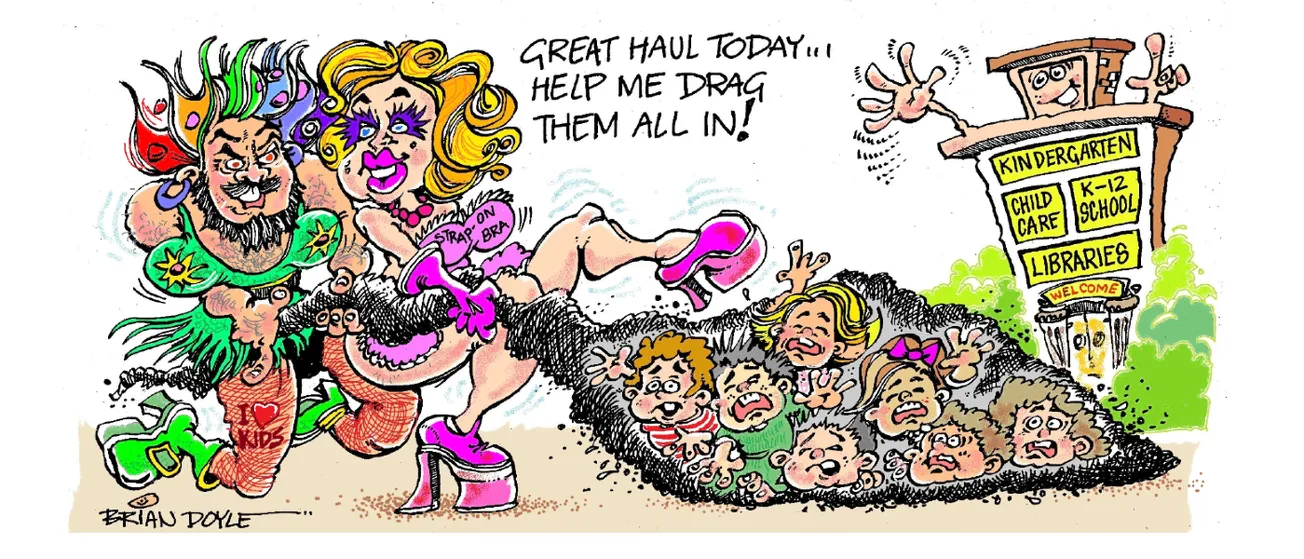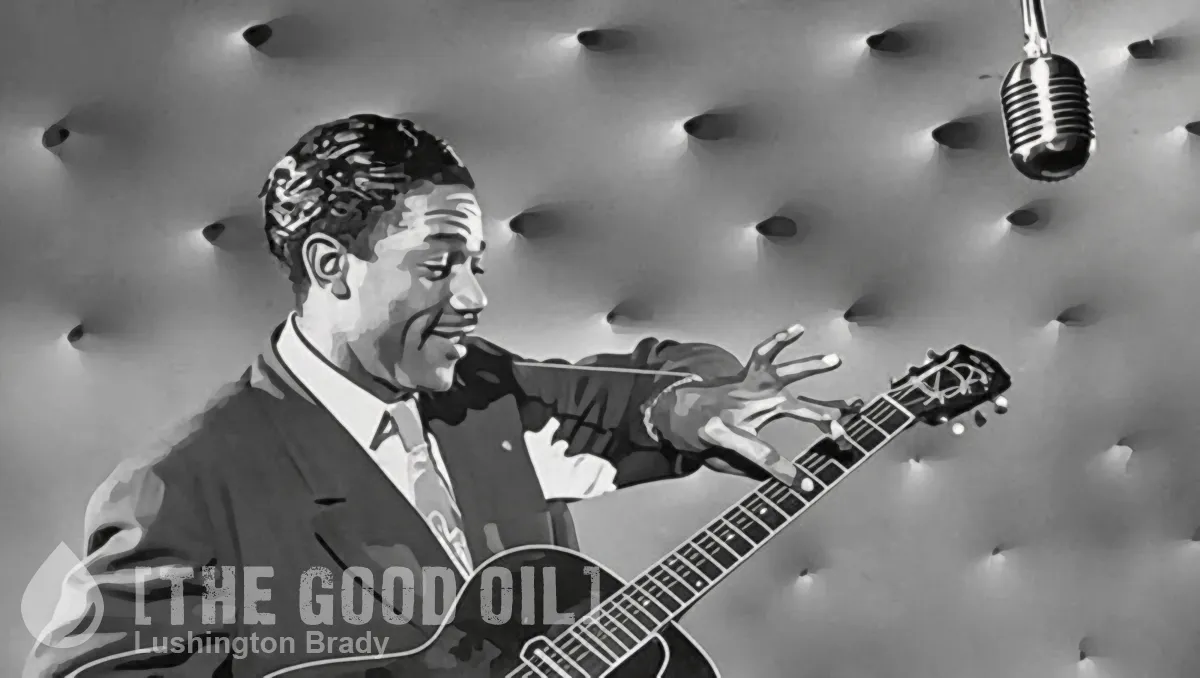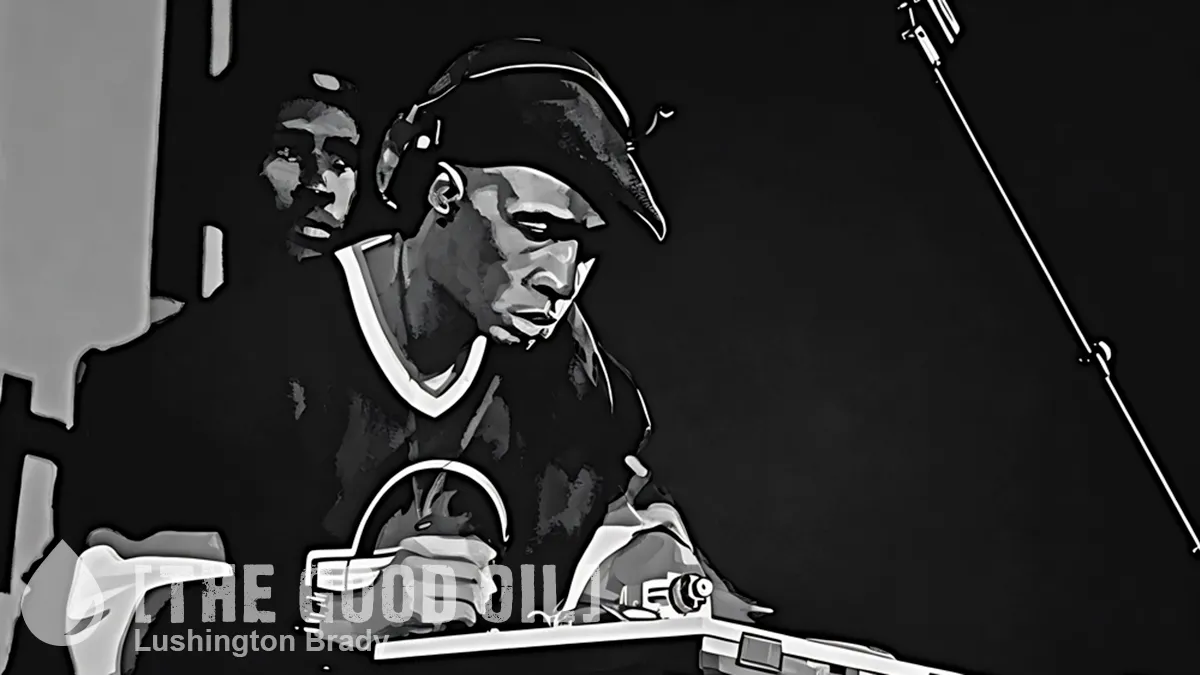Kurt Mahlburg
Kurt Mahlburg is a writer and author, and an emerging Australian voice on culture and the Christian faith. He has a passion for both the philosophical and the personal, drawing on his background as a graduate architect, a primary school teacher, a missionary, and a young adult pastor.
When Western nations legalised same-sex marriage in the mid-2010s, few people were expecting a deluge of drag queens to follow — but somehow, that is what we got.
Now drag queens are everywhere: in city libraries, at K-12 schools, in parades, and just in case you can’t escape them elsewhere, on airlines. If you criticise this bizarre modern ritual, watch out — you might be fired, as happened to one unsuspecting UK university lecturer.
Apparently, like the smartphone, microplastics or the nanny state, drag queens are just part of what it means to live in the modern world, and you will enjoy them.
But why? Who said so? From whence came this sexual sacrament? And what is its intended purpose?
An insightful new mini-documentary by Christopher Rufo — the investigative journalist who’s been kicking goals against critical race theory and woke-addled institutions like Disney and Harvard — provides some compelling, if frightful, answers.
Rufo traces the curious history of the drag queen movement to its apex in Drag Queen Story Hour — a ritual designed specifically to subvert children. What he reveals is hideous, but for the sake of our decaying culture and the safety and integrity of the next generation, the truths he exposes desperately need the disinfectant of sunlight.
Rufo begins by acknowledging that “men dressing up as women has a long history” — whether in “Shakespeare’s England, where men played all the parts, including those of women”, or the pantomime dames of following centuries who “entertained audiences with absurd performances”.
The next development, while slightly more bizarre, still existed on the margins and did not enter the mainstream consciousness. It involved a freed Black slave named William Dorsey Swann who called himself the “queen of drag”, and who “dressed in women’s dresses and was arrested for running a brothel in Washington, D.C. in 1896”. Though Swann’s behaviour was “outlandish for the time”, explains Rufo, “he saw himself as a sensualist, not an activist — an orientation that continued in the drag scene for more than 70 years”.
Politicised
It was in connection with the Stonewall riots of 1969 that “drag suddenly became political”. Explains Rufo:
In the aftermath of these events, Sylvia Rivera and Marsha P. Johnson — two drag queens who participated in the riot — founded a group called the Street Transvestite Action Revolutionaries, or STAR. Their manifesto demanded “the right to self-determination over the use of their bodies; the right to be gay, anytime, anyplace; the right to free physiological change and modification of sex on demand”.
More than just entertainment, drag was now a political ideology that “sought the destruction of bourgeois norms”. Rufo quotes counterculture writer Daniel Harris who explains that the “aesthetic of drag” was captured by gay men who “used their costumes to reevaluate the whole concept of normality and thus carry out a crucial part of the cross-dresser’s agenda: revenge”.
Rufo continues:
The transgression was the point. The modern drag queens were no longer private libertines or pantomime dames. They were left-wing revolutionaries who wanted to overthrow the system through sex. As Harris described it, “Men now wear such sexually explicit outfits as ball gowns with prosthetic breasts sewn on to the outside of dresses, black nighties with gigantic strap-on dildos, and transparent vinyl mini-skirts that reveal lacy panties with strategic rips and telltale stains suggestive of deflowerment.”
Now that drag had become a political weapon, it needed intellectual foundations. Enter lesbian theorist Gayle Rubin, the infamous founder of queer theory. “Rubin wanted sexual revolutionaries such as drag queens to disorder public sexuality,” Rufo commentates — “and pave the way for liberating fetishists, transsexuals, sadomasochists, prostitutes and paedophiles — yes, paedophiles.” Leaving no room for doubt, Rufo clarifies that “Rubin denounced fears of child sex abuse as ‘erotic hysteria’, railed against anti-child porn laws, and argued for normalising the behaviour of those whose eroticism transgresses generational boundaries, or in her words, ‘boylovers’.”
The other academic cited by Rufo is Judith Butler, who “took the basic insights of queer theory and supercharged them with postmodernism”. He explains that Butler:
“made an elaborate theoretical case for treating drag queens as the vanguard of the sexual revolution. She argued that all sexuality was a social construct that could be reshaped through performativity. Since there is nothing essential about concepts such as man, woman or sex, Butler claimed, all of these categories could be subverted and redefined through new performances, and drag queens were the perfect vehicle for this subversion.
It was in 2015 that a Los Angeles-based queer activist named Michelle Tea took all of the ideological pieces and combined them into the “brilliant political move” that was Drag Queen Story Hour: “a ‘family-friendly” way to educate children in tolerance, literacy and gender expression”. Rufo describes the ascendency of this project as it expanded across the United States “from coast to coast”:
The political left rallied to [Tea’s] support. The government of New York City subsidised dozens of Drag Queen Story Hours in the city’s public schools. The Attorney General of Michigan called for “a drag queen for every school”. And California state senator Scott Wiener even suggested legislation to offer “Drag Queen 101” as part of the K through 12 curriculum.
Calculated indoctrination
Rufo’s most chilling revelation is what he calls “the real nature of Drag Queen Story Hour”, as articulated by gender queer academic and drag queen Harris Kornstein. According to Rufo, Kornstein “co-wrote the movement’s defining manifesto, ‘Drag Pedagogy: The Playful Practice of Queer Imagination in Early Childhood’, that lays out the movement’s plan in shockingly honest language”:
Citing Judith Butler and other queer theorists, Kornstein argues that drag queens can teach kids “how to live queerly” and to bring “queer ways of knowing and being into the education of young children”. But the real task, according to Kornstein, is to disrupt the “binary between womanhood and manhood”, seed the room with “gender-transgressive themes,” and break the “reproductive futurity” of the “nuclear family” and the “sexually monogamous marriage”.
“Yes,” warns Rufo, Drag Queen Story Hour is “also about sex”. He goes on:
Kornstein fills his paper with double entendres and erotic language, blurring the lines between adult sexuality and childhood innocence. He describes Drag Queen Story Hour as a “site of queer pleasure” that promises to “turn rejection into desire”, to transform the “labour of performance into the pleasure of participation”, and to create a “queer relationality between adult and child”. Like the queer theorists before them, the modern drag activists used their newfound power to flirt with the ultimate sexual transgression.
It is remarkable just how successful Drag Queen Story Hour has been — not just in the United States but now across the Anglosphere. “They have seduced the media and secured the patronage of governments, philanthropies and other elite institutions,” says Rufo.
However, what they cannot hide, he concludes, is that “these are adult male transvestites who want to share their sexuality with children”. “They can conceal their activities with makeup and marketing language, but the subculture of queer theory has always attracted men who want to take the ideology to its hideous conclusion.”
No mere speculation, Rufo confirms that this is already taking place:
In Minneapolis, a dry green in heels and a pink miniskirt spreads his legs open in front of children. In Portland, a large male transvestite allows toddlers to climb on top of him, grab at his fake breasts and press themselves against his body. In Miami, a man with enormous fake breasts and dollar bills stuffed into his g-string grabs the hand of a preschool-aged girl and struts her in front of the crowd. And still others have gone further. They have committed the most heinous crimes and have used Drug Queen Story Hour to to gain access to kids.
Where to from here? Rufo vows that a reckoning is coming. “Once the public has understood the true nature of Drag Queen Story Hour, the only way forward is to quickly restore the limits that have been recklessly abandoned and to send the perversions of queer theory back to the margins.”
Watch the full documentary, ‘The Real Story Behind Drag Queen Story Hour’ here.









